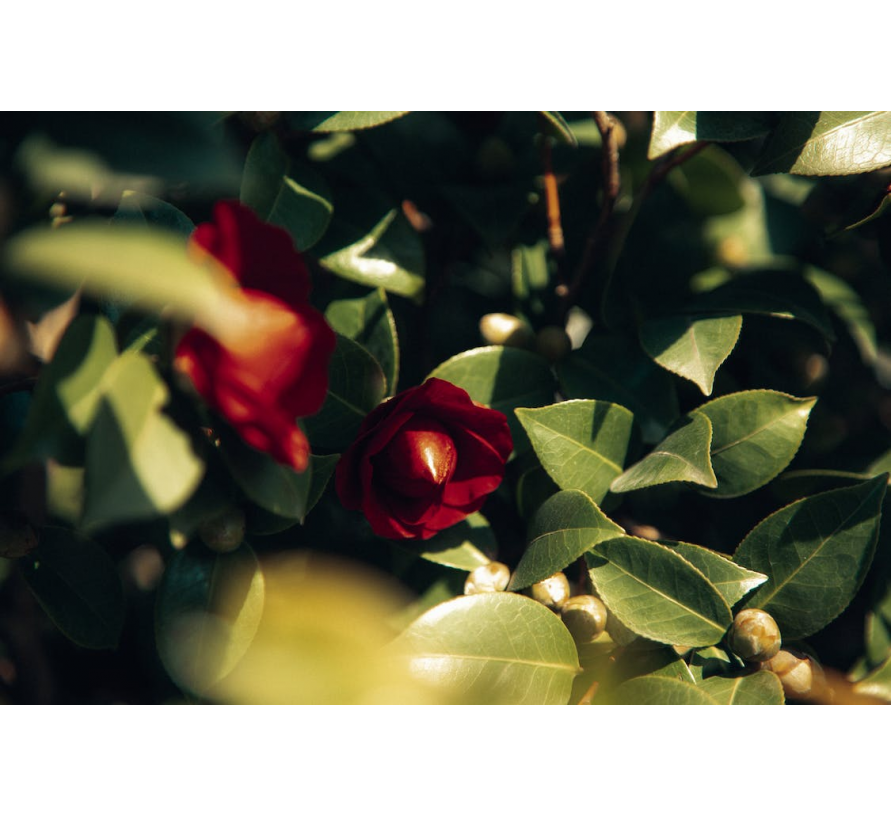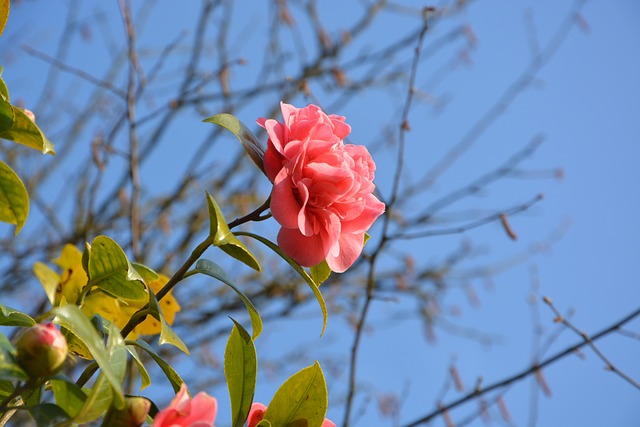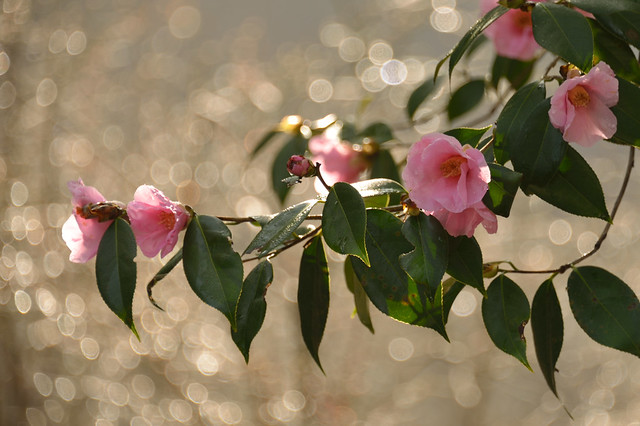Camellia. Mini guide
The Camellia Japonica is a shrub that will decorate our garden from February until the arrival of spring.
Camellia japonica is a shrub that will decorate our garden from February until the arrival of spring.
Tough, evergreen, bright dark green, still with no flowers and with the proper shape camellia will be a focal point in our garden.
Its flowers remind us of roses, although not so long-lived, but equally attractive.
How do we take care of her to make her look wonderful?
Viveros González offers you a mini guide to easily taking care of your camellias and to cultivate beautiful and lushy shrubs.
What is the best time to plant camellias?
It will depend of the climate in your zone, but basically it would be better to do it in spring in areas of colder temperature, this way roots will have the time to develope and be stronger for supporting winter inclemency. In warm areas autumn is also a good time.
Where do we locate it?
Place it in a shaded area, without direct sun, for example under the trees or facing north in the case you live in a warm zone. When its canopy become developed, roots will appreciate shade and at the same time the plant will resist more hours of sun. In colder areas no matter if you plant them in the sun, as far as temperatures in summer they do not receive extremely hot temperatures.
What temperature does camellia need?
Between 7ºC and 16ºC is appropriate, although it can withstand temperatures of a few days of frost as far as roots are protected with a good layer of pine bark. If it is in a pot cover it with a plastic completely, or move the pot to a warmer area. An adult plant will also withstand much better low temperatures.
What type of soil is good for Camellias?
Camellias need lightly acidic soil, with a PH of between 5.5-6.5. Choose substrate for acidophilous plants.
It is also fundamental to provide the plants of a good drainage system.
- With what frequency shall we water it?
Water when the soil is almost dry.
Water slowly so that the substratum can absorb the water slowly this ways the roots will receive much better the liquid, but do not overwater.
The rainwater is the best one to use, lime water is not good at all for them.
Don't leave your plant to be thirsty in any case as
- How and when should we fertilise?
After flowering during the spring until the arrival of high temperatures - when the heat arrives the plant enters a period of rest - we can take advantage of this to add a new layer of substrate for acidophilic plants.
We should also use iron-based fertilisers such as chelate to prevent the leaves from turning yellow.
And it is always better to fertilise a day after watering so that the substrate is sufficiently hydrated to better accept the fertiliser.
During the flowering period we can use a special flowering fertiliser to achieve a bigger and better flowering.
- When and how do we prune the camellia?
The best time to prune the camellia is after it has flowered.
Damaged, broken, weak or dry branches should be cut back.
Also some inner branches when the foliage is too dense and does not allow good air circulation.
Also any branches that are too long and prevent the bush from having a balanced shape.
In order to keep it growing, cut just above the previous year's shoot.
- Why do the leaves look yellow?
Probably due to a lack of acidity in the soil. In this case, add soil for acidophilic plants.
Iron chelate can also be added when watering.
Very chalky water does not allow a correct assimilation of iron by the roots.
Another reason may be attacks by mealy bugs or red spider mites, which usually appear when the environment is dry and warm.
- Why do the buds fall off before opening?
The camellia reproduces a large number of new flower buds, and not all of them will develop, so many will not open and others will fall off.
However, if the plant has been thirsty at any given time, this can lead to a precipitous fall of these new shoots, so it is essential to water as soon as the top of the substrate is dry.
Another reason is due to over-watering. It is essential that the water does not puddle.
A sudden drop in temperature is another factor that precipitates bud drop.
- What pests and diseases are most frequent in camellia?
Camellia can be affected by various pests and diseases; mealy bugs, red spider mite, root rot, flower rot, spotting, etc.
The most important thing is to give the plant the care we have talked about in order to prevent these pests and diseases as much as possible.
However, in the second part we will talk about which are the most frequent ones.

 English
English Spanish
Spanish


Comments
Leave your comment